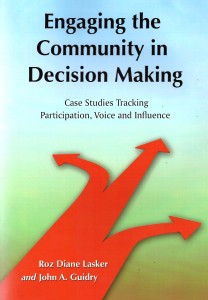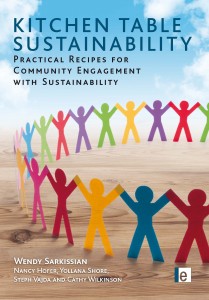
March 2011
Is the State Government’s 30-year plan a worry to you?
Many municipalities in Australia and elsewhere are facing pressures from State governments to produce plans consistent with new government legislation. This sort of process is now occurring internationally.
In one capital city, the State’s plan sets out a spatial vision for a transit-focused city that will accommodate population and economic growth, protect the environment, and preserve the heritage, history and character of the city. And councils are required to respond.
These sorts of initiatives have massive implications for local government. From the local perspective, this almost certainly means that councils will be required to increase the number of dwellings and the density in their municipalities.
This is a worldwide phenomenon, as governments grapple with the challenges of ageing infrastructure, the costs of servicing low-density development, the costs of automobile dependence, Peak Oil and expected population growth.
The hard part for municipal governments is that, despite their communities being largely in favour of environmental reform and policies to combat pollution and increase energy efficiency, residents still seem to oppose density increases.
There is considerable evidence that NIMBY responses are legitimate and that NIMBY psychology should be guiding our approaches.
I remember the Sydney medium-density policy, promulgated as a broad-brush initiative in 1983. Clare Marcus was visiting at the time and we heard about the 13,000 objections that had been received. That was nearly thirty years ago! In Australia, communities are still opposing density increases.
Nevertheless, councils must implement state government policies, however unpalatable they may be to some sectors of the community. We must all play our part in educing our ecological footprint and acting as responsible planetary citizens.
So what can councils do in this cleft stick?
First, we need to remember that people in our communities are anxious. The world is a painful place. We’re beset with trauma and everyone’s feeling it — one way or another. There’s a lot of free-floating anxiety around, understandably. So we cannot expect people to be “reasonable” when they are upset.
And the way the world is going, they/we could be upset for quite a while.
Second, we should acknowledge that the ways we undertook engagement in the past will need to be tailored to this new situation and these new demands. While we have to meet those targets set by senior government’s authorities , we nevertheless need richer and more thorough processes to help people grapple with the highly complex issues that are addressed by the new policies.
Complex content means that we need to match content with process: we may need more ‘complex’ and multifaceted processes to help people understand complex issues.
Third, those processes will take more time and resources. It’s inevitable. If we want our citizens to participate in meaningful ways about housing density, transport options, residential planning, population policy… and all the implications of these sustainability initiatives … they will need help in building their knowledgeability and literacy about these issues. Community education will need to be part of the engagement process.
The good news is: communities can benefit enormously from engaging with these processes.
If people fear housing density, let’s find ways to maximise their influence over the outcomes.
That’s the message local municipalities can have for their citizens: Become involved so that you can influence the outcome.
A wonderful recent book addresses the issue of community influence in engagement processes. It’s the best book on community engagement I’ve read for years. It’s called “Engaging the Community in Decision Making” by Roz Lasker and John Guidry (2009).

This is a marvellous book – one of the best books on community engagement I have read in decades. Asking the question, “How seriously do we want to achieve the promise of community participation?”, this valuable book comes at a time when people working in community engagement need all the help we can get!
Each of the ten case narratives is analyzed within a framework that includes “a clear way to think about whose voices had been influential“:
- Who had a voice?
- Who had an influential voice? (This involved tracking different people’s ideas over time to see what happened as a result of their ideas being expressed.)
- Did the patterns of influence matter?
Each narrative begins with “the Story” and includes a valuable section on “relating impacts to influence“.
Some of their insights and findings are also worth restating:
- The careful recording and reporting of ideas supported difficult and controversial actions to address issues that mattered a lot to marginalized residents. (This is a matter we emphasize at length in SpeakOut: The Step-by-Step Guide to SpeakOuts and Community Workshops [2009].)
- The lack of clarity or specificity in the communication of ideas created serious problems in some cases.
- The use of ideas from marginalized and ordinary residents depended on the alignment of their ideas with the ideas of other players.
- The use of ideas from people with acknowledged expertise was not always helpful.
To purchase this book, click here: https://www.amazon.com/Engaging-Community-Decision-Making-Participation/dp/078644312X
Reflecting on this book in the context of a hypothetical 30-Year Plan, I’d say that our primary objective in implementing plans such as these needs to be “relating impacts to influence” — and convincing communities that we are sincere in that undertaking.
It’s going to be a long journey.
We can do it the hard way or the easier way.
In my view, the easier way will be a “Path with Heart”. A path to the heart of the matter. To the heart of community concerns about sustainability.
These matters are discussed at length in Kitchen Table Sustainability: Practical Recipes for Community Engagement with Sustainability.
To order Kitchen Table Sustainability, simply click here:
https://www.amazon.com/Kitchen-Table-Sustainability-Practical-Engagement/dp/1844076148

